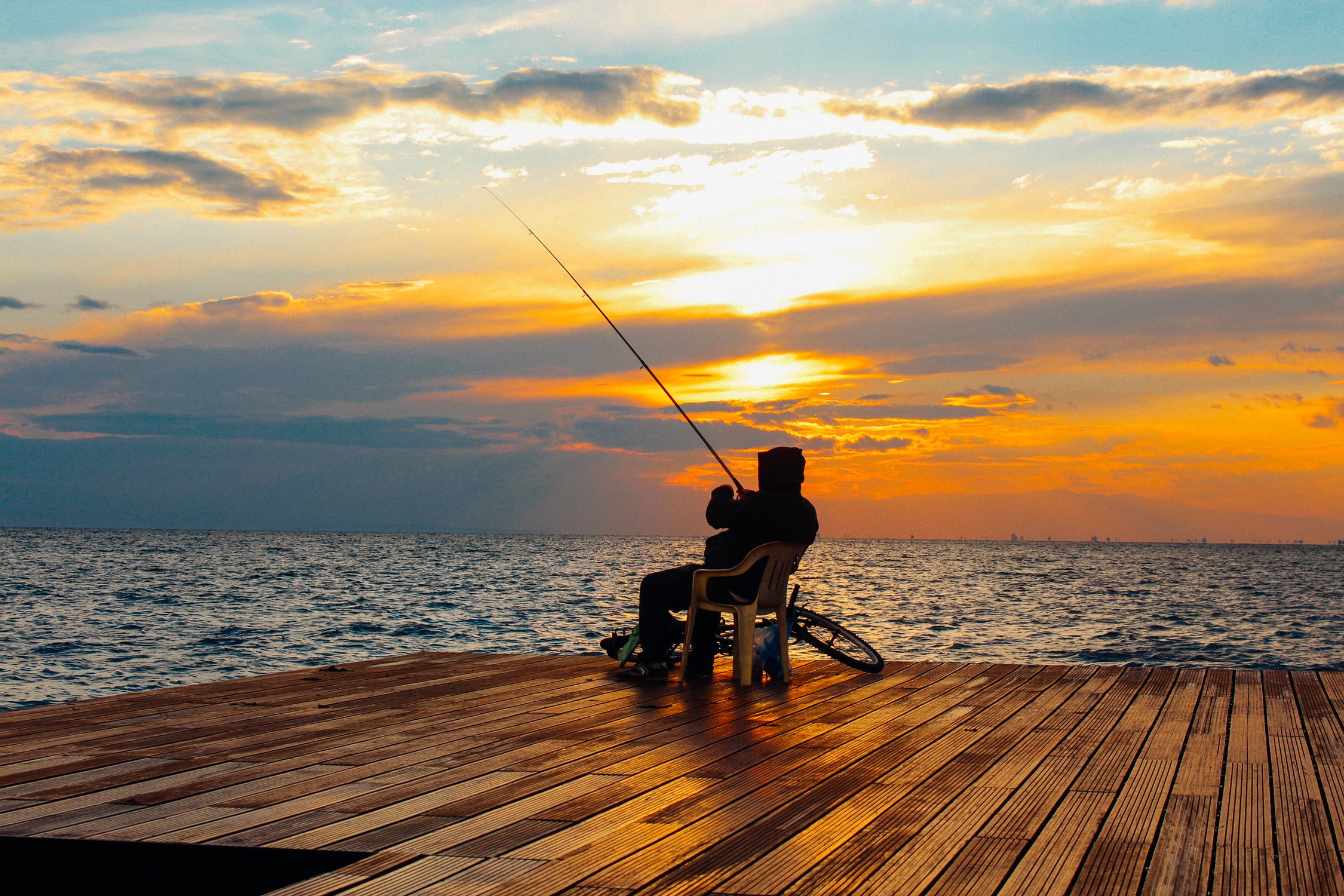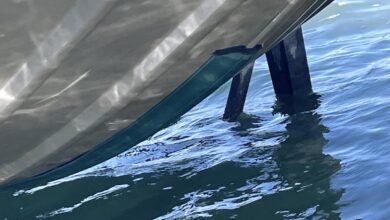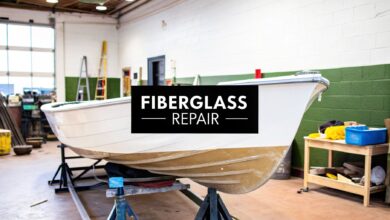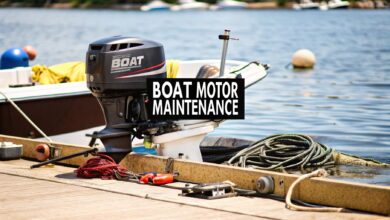
The most important rule in anchoring is letting out enough line. This line, known as the scope, allows your anchor to dig into the seabed. A great rule of thumb is a 7:1 ratio.
For every foot of depth from your boat’s bow to the bottom, let out seven feet of line. Getting this right is the first step to a secure set.
Mastering the Essentials of Anchoring
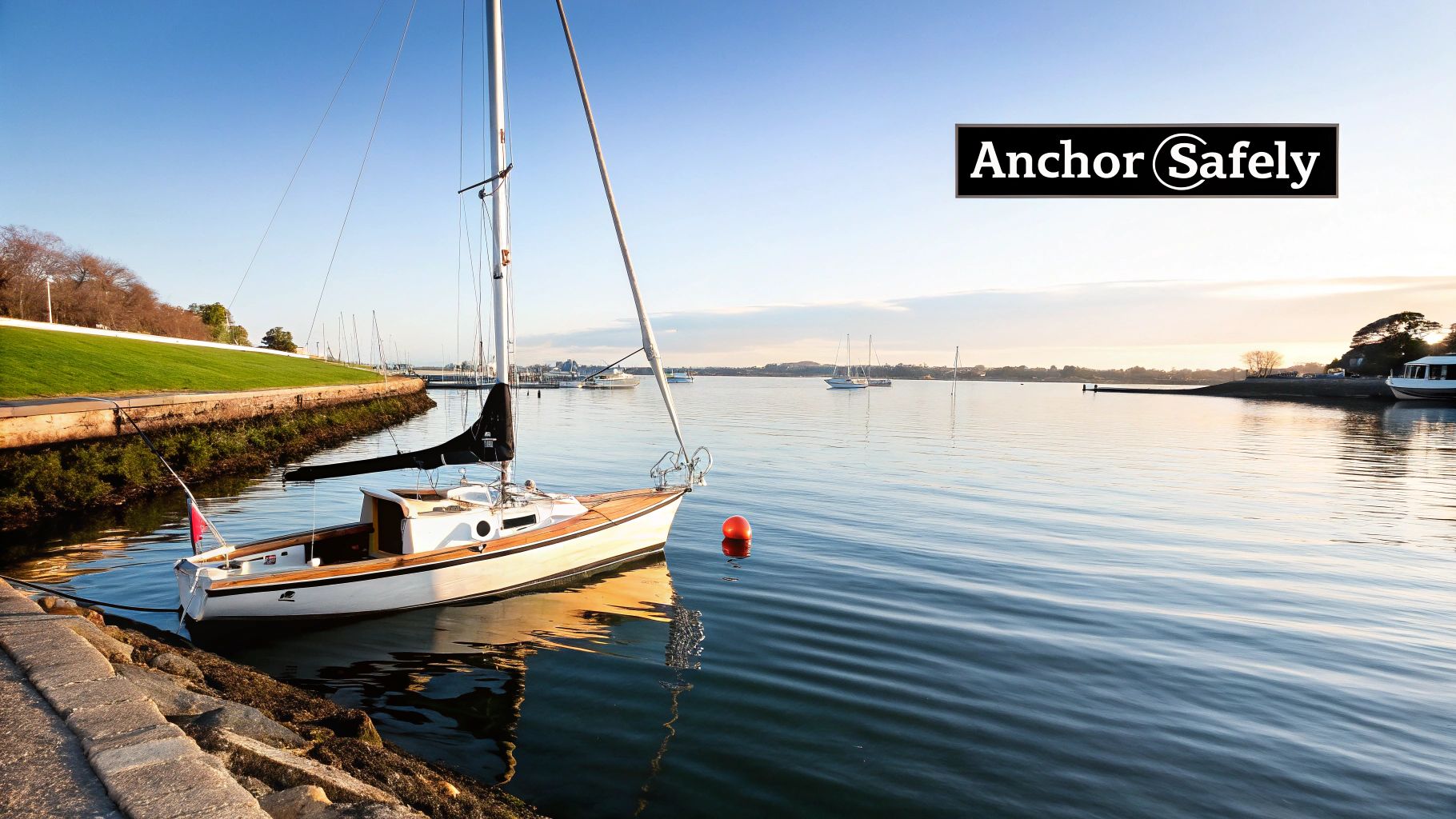
Before dropping the hook, you must understand the fundamentals. Your anchoring system, or "ground tackle," is a critical piece of safety gear. It includes the anchor, the rode (chain or rope), and the connecting hardware.
Even the best gear is useless in the wrong spot. Learning to read the seabed is an essential skill. Sand and mud offer excellent holding power, while rocky or grassy bottoms can prevent an anchor from setting.
Why Scope Is So Important
Scope is the secret to a solid, reliable set. It is all about the angle of pull on the anchor. A short scope creates an upward pull, which will almost guarantee dragging.
A longer scope creates a more horizontal pull. This encourages the anchor to dig deeper and hold firm.
Getting the scope right is the difference between waking up right where you dropped anchor and finding yourself dangerously adrift in the middle of the night.
Proper anchoring is a necessity for safe boating. With recreational boating on the rise, boaters depend on this equipment. The global boat anchor market is projected to hit around $500 million by 2025.
You can see the boat anchor market trends at marketreportanalytics.com. For a deeper dive into the process, our guide on how to anchor a boat covers everything.
Here's a quick reference for calculating your scope.
Quick Guide to Anchor Scope
Remember to measure depth from your bow, not the waterline. This accounts for the extra height.
| Condition | Recommended Scope | Example (10ft depth) |
|---|---|---|
| Calm Conditions | 5:1 | 50 ft of rode |
| Moderate Wind/Current | 7:1 | 70 ft of rode |
| Heavy Wind/Storm | 10:1 or more | 100+ ft of rode |
This table is a great starting point. Always be prepared to let out more rode if you feel the boat dragging.
Choosing the Right Gear for Your Boat

There is no single "best" anchor. The secret is finding the right one for your boat and the seabed you frequent. It’s a classic case of the right tool for the job.
No one design can do it all. Getting familiar with the main types is the first step toward anchoring with confidence. This choice is fundamental to how securely you can anchor a boat.
You'll mainly see three types: Plow, Danforth (Fluke), and scoop-style anchors. Each has its own strengths. A Plow anchor is a reliable all-rounder that holds well in sand, mud, and some rocky bottoms.
Comparing Popular Anchor Designs
Danforth anchors are popular for good reason. They are lightweight and have fantastic holding power in soft bottoms like mud and sand. However, they can struggle to grip in weedy or rocky seabeds.
Modern scoop-style anchors have really changed the game. Many cruisers swear by them for their incredible holding power across a wide variety of bottom conditions.
The real trade-off you're making is usually between specialized holding power and all-around versatility. An anchor that's a beast in soft mud might be completely useless on a rocky ledge.
The anchor is just one piece of the safety puzzle. Having the right equipment on board is non-negotiable. It’s always smart to run through an ultimate boat safety checklist to ensure you’re prepared.
A Practical Guide to Setting Your Anchor
Dropping anchor is more than just heaving it overboard. First, read the conditions to see which way the wind or current is pushing you. Your boat will naturally want to lie in that direction.
Slowly motor into the wind or current, just past where you want to sit. Come to a stop, and as you drift back, begin letting out your rode. Lay it out smoothly so the anchor has a chance to dig in properly.
This image breaks down the critical choices you need to make about your ground tackle.
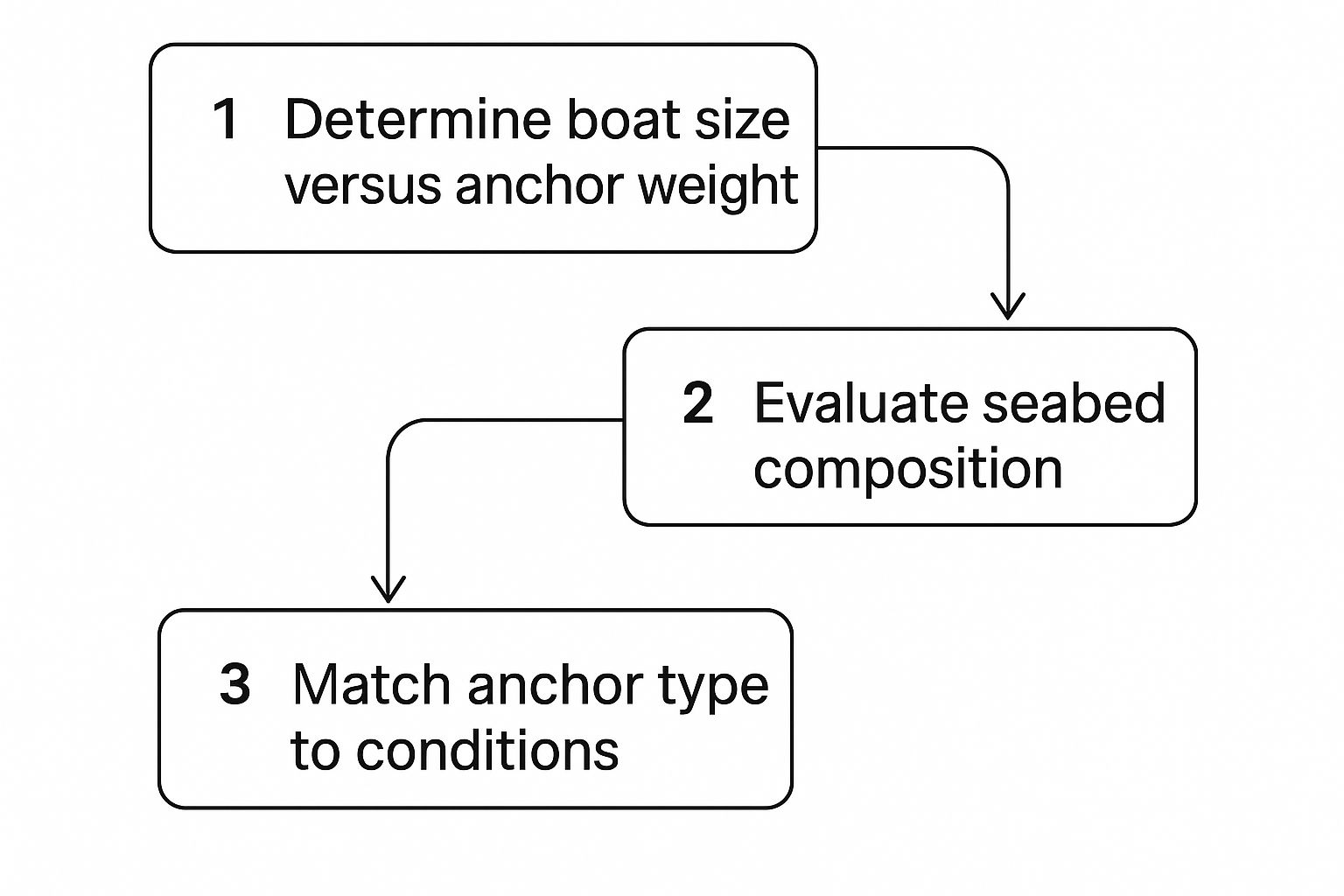
Getting the right gear for your boat and the seabed is the foundation of safe anchoring.
Setting the Hook
Once you have enough scope out, you need to set the anchor. Gently nudge your engine into reverse to apply a steady pull on the rode. You’ll feel the line go taught, and the boat should come to a firm stop.
To be certain you're not dragging, watch two landmarks on shore. If their positions relative to each other don't change, you're set. You can also use your GPS to confirm your position isn't changing.
A reliable set is non-negotiable for every boater. The global ship anchor market was valued at USD 1.5 billion in 2023 and is expected to grow. You can read more about the trends in the global ship anchor market at dataintelo.com.
Handling Tricky Anchoring Situations
Perfect anchoring conditions are rare. You'll often deal with challenges like crowded harbors or gusty winds. These situations require more than just dropping the hook.
A bit of experience and a few tricks can make the difference. They can separate a peaceful night from a stressful, anchor-dragging mess.
Crowded Anchorages and Strong Currents
In a packed anchorage, you want to swing in sync with other boats. A good technique is to set two anchors off the bow in a V-shape. This is known as a forked moor.
This setup dramatically cuts down your boat's swing radius. It’s a game-changer that keeps you a safe distance from your neighbors, especially when conditions shift.
Dealing with Difficult Seabeds
Rocky or weedy bottoms are the worst for snagging anchors. Retrieval can be a nightmare in these conditions.
A simple solution is to rig a trip line. Attach a smaller line from the crown of the anchor up to a surface buoy. If your anchor gets stuck, pull the trip line to yank it out backward.
A fouled anchor in changing weather can quickly turn a calm evening into a dangerous situation. Having a plan, like using a trip line, is a mark of a prepared mariner.
Keeping your crew comfortable during a potentially rough ride is also important. For some great advice on that, check out these tips for preventing seasickness.
Now, let's look at a few common problems and how to solve them.
Common Anchoring Problems and Solutions
Even with good preparation, things can go wrong. An anchor that drags or gets stuck can be frustrating. Most issues have straightforward solutions if you know what to do.
| Problem | Likely Cause | Effective Solution |
|---|---|---|
| Anchor is Dragging | Not enough scope let out. Anchor type is wrong for the seabed. | Let out more scope (aim for 7:1). If it persists, re-anchor in a new spot. |
| Anchor Won't Set | Hard or rocky bottom. Moving too fast while dropping anchor. | Let the boat drift back slowly. Try to find a sand or mud patch nearby. |
| Anchor is Stuck (Fouled) | Wedged under a rock, cable, or other debris. | Use a trip line. If not, motor forward over the anchor to pull it from the opposite direction. |
| Boat is Sailing at Anchor | High winds are causing the boat to swing wildly from side to side. | Set a second anchor off the bow (forked moor) or use a riding sail to stabilize the boat. |
Remember, a little troubleshooting can solve most anchoring issues. The key is to stay calm, assess the situation, and apply the right technique.
Weighing Anchor Without the Strain
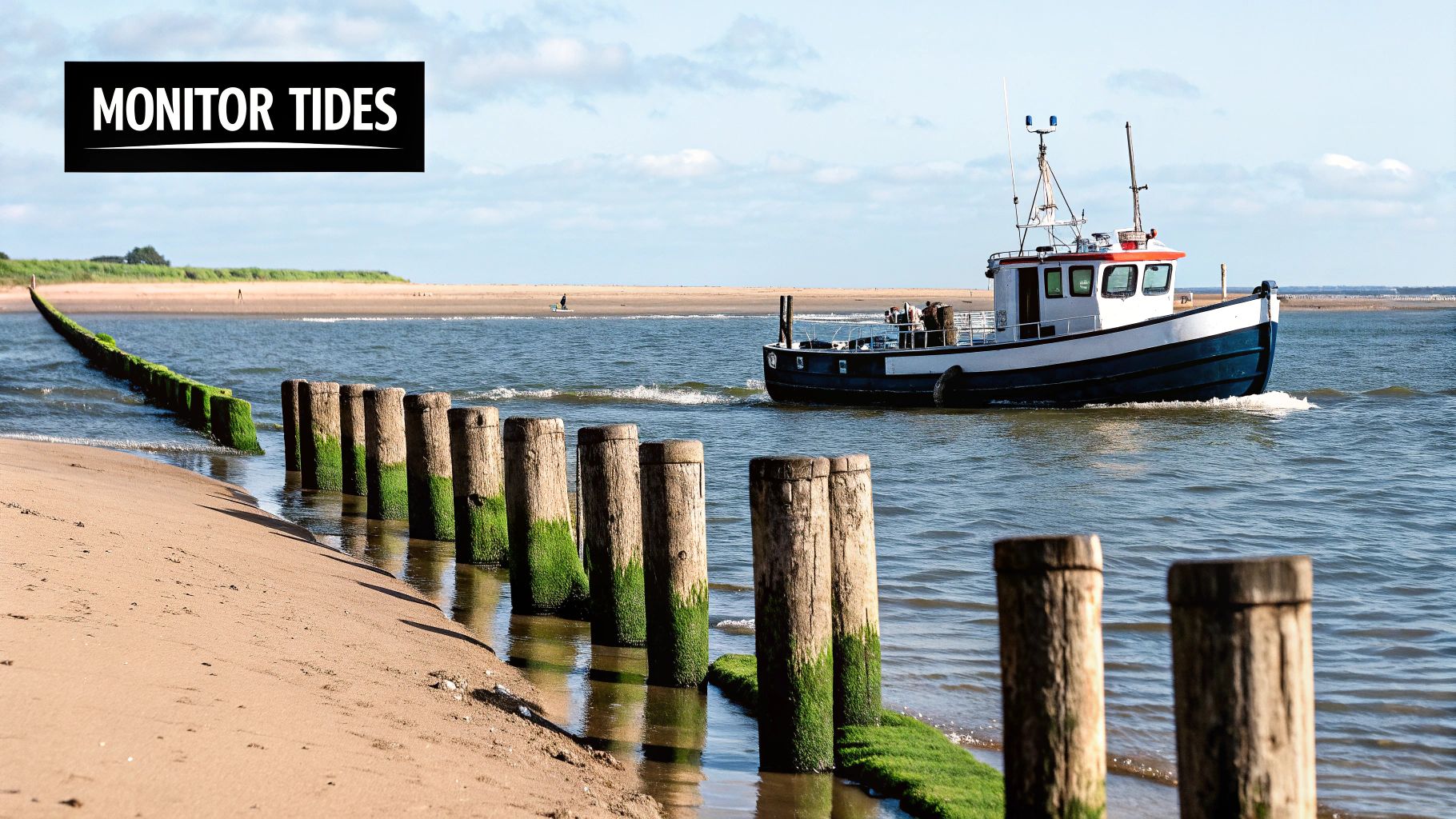
Hauling up the anchor should not be a battle. The secret is to let your engine do the real work.
Motor forward slowly along the line of your anchor rode. As the boat moves, have a crew member take in the slack. This simple technique makes the whole process nearly effortless.
Breaking a Stubborn Anchor Free
Sometimes an anchor digs in so deep that it feels stuck. Do not just yank on it harder.
Instead, idle the boat forward until you're just past where the anchor is set. The rode should be almost vertical, then cleat it off.
The boat’s own gentle rocking and buoyancy will do the rest. That slight, persistent upward pull from a new angle is usually all it takes to pop the anchor free.
If it's really lodged, try motoring in a wide, slow circle around it. This changes the pulling direction and can often unhook it.
Keeping Your Deck Clean
Bringing up the anchor means bringing up whatever it was sitting in. Mud, seaweed, and other gunk will come along for the ride.
A quick rinse with a bucket of seawater as the rode comes over the bow roller makes a difference. It keeps your deck clean and prevents grime from getting into your anchor locker. Keeping gear clean helps preserve it, including connections in our guide to choosing a proper boat safety chain.
Common Questions About Anchoring a Boat
Even after you’ve got the basics down, anchoring can be tricky. Getting a feel for the nuances takes time. Here are answers to some common questions.
How Much Rode Should I Actually Let Out?
This is the number one question. "Scope" is the ratio of anchor rode to the depth of the water.
The golden rule starts at a 5:1 scope for calm weather. If the water is 20 feet deep and your bow is 5 feet off the water, that's a 25-foot total depth. You'd want 125 feet of rode (25 x 5).
- Moderate Conditions: Increase to a 7:1 scope.
- Rough Weather: Use a 10:1 scope or even more.
What Do I Do if My Anchor Is Dragging?
If your anchor is dragging, don't panic. First, let out more scope. Often, just another 20 or 30 feet of rode is enough for it to dig back in.
If more line doesn't solve it, it's time to reset. Start the engine to gain control of the boat. Retrieve the anchor and find a better spot to try again.
An anchor alarm is your best friend for overnight stays. Set it up on your chartplotter or phone app to alert you if the boat strays from its spot.
Should I Go With All-Chain or a Rope/Chain Combo?
This is a classic debate. An all-chain rode is incredibly durable. Its weight creates a "catenary"—a sag in the line—that acts as a great shock absorber.
A combination of rope and chain is lighter and less expensive. It's a perfectly good option for many boats. However, the rope is more vulnerable to chafe than all-chain.
At Boating Articles, we're committed to giving you the knowledge you need to enjoy every moment on the water. Find more expert guides and practical advice at our website.
